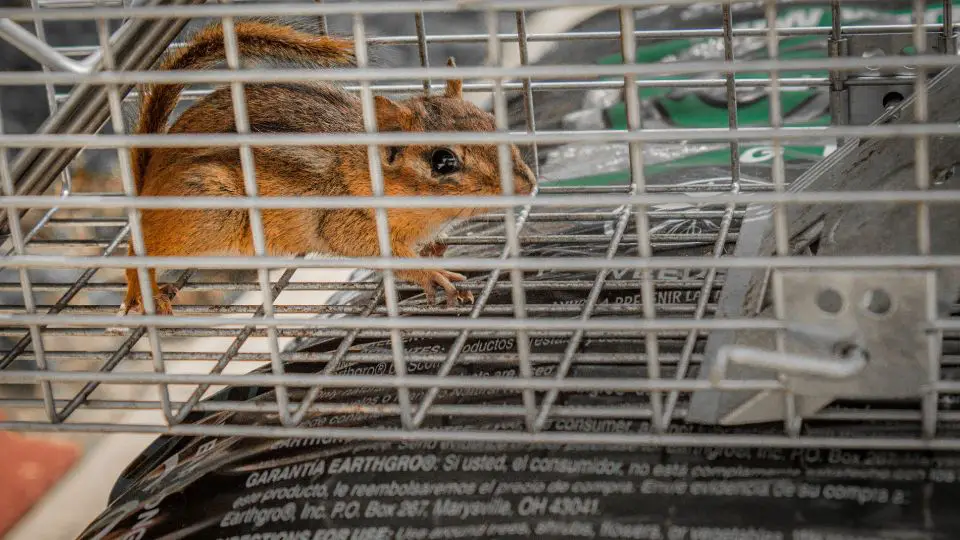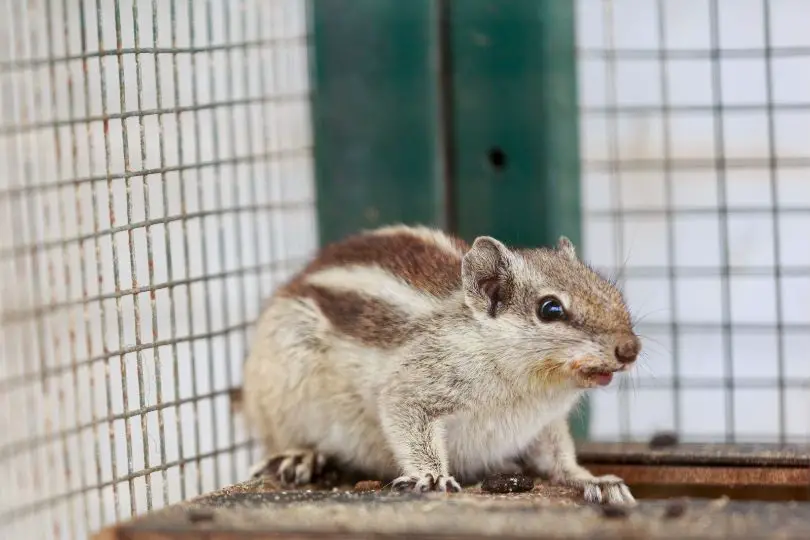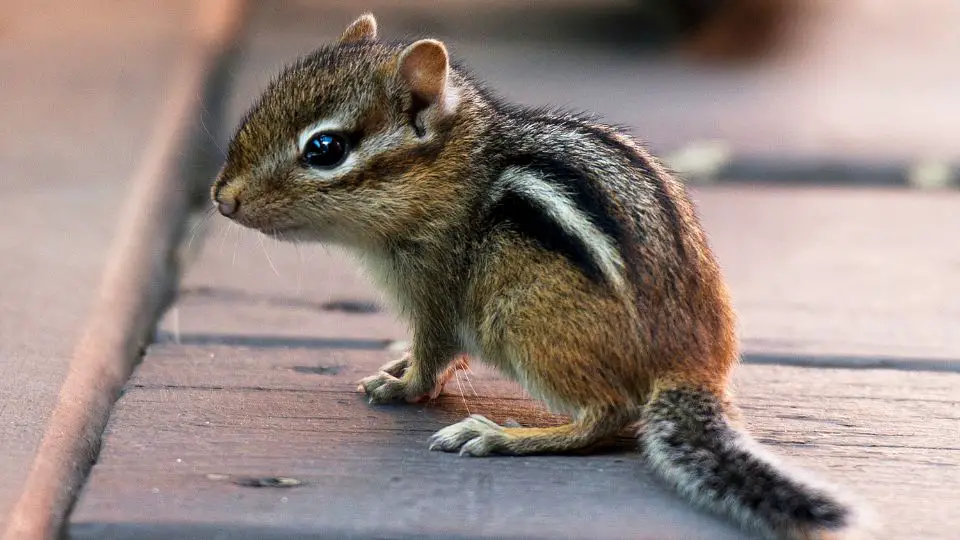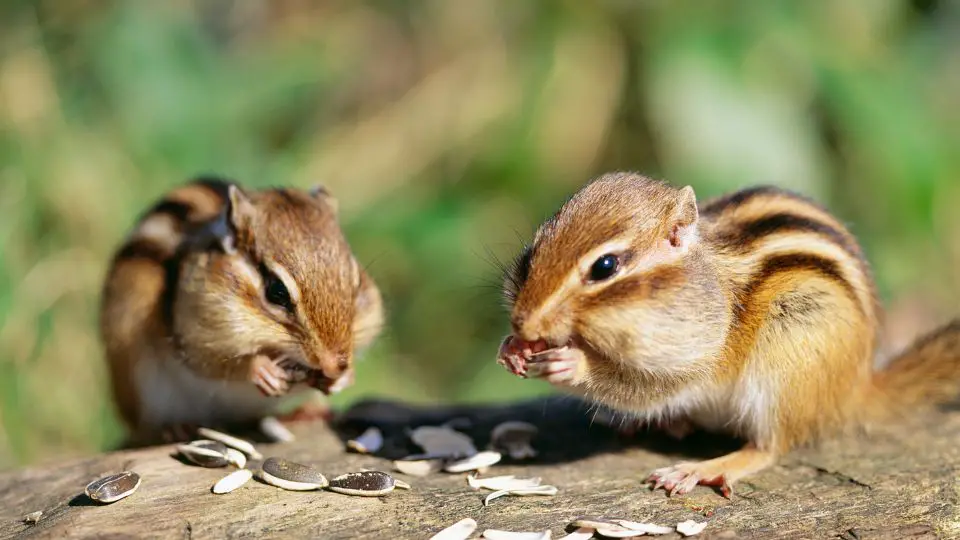You can humanely and quickly get rid of the chipmunk by live trapping it. You can purchase a live trap specifically made for chipmunks or a general critter trap. The best chipmunk bait is peanut butter. If you buy a general critter trap, ensure the holes in the wiring aren't large enough for the chipmunk to escape. You can also purchase a rodent bucket trap.
Table of Contents
What attracts chipmunks to your house or yard?
Chipmunks prefer to live in enclosed spaces to stay safe from predators. During the winter, chipmunks seek warm shelter and may find warmth and protection in your garage, attic, shed, and barn.
If your yard is overgrown or has large amounts of vegetation, chipmunks will be attracted to the possible burrowing places. Other adequate hiding spots would be near tree stumps, rocks, patios, and woodpiles.
Chipmunks are omnivores and are attracted to homes with accessible food sources. Food sources for chipmunks include bird feeders, nut and fruit trees, vegetable gardens, and flower bulbs.
Chipmunks will also use your garbage cans as a food source. They may chew through the tops and bottoms of garbage cans to reach any edible food inside the can.
How do you get rid of chipmunks fast?
If you notice chipmunk holes near your home, you will want to act fast, as even though chipmunks are small animals, their deep burrows can cause structural damage to your home’s foundation.
You can create your own trap using a bucket. This particular type of trap is commonly known as the sunflower bucket method.
Fill a good bucket with water, but not so much water that the chipmunk will drown. You want just enough water that the chipmunk struggles to escape the bucket. Scatter sunflower seeds in the water and around the bucket.
Place the bucket near a sort of ledge so that the chipmunk can get into it. Effective locations would be near rocks, trees, or home structures such as steps and porches.
If you have a chipmunk infestation, it is best to call pest control and let the professionals handle the situation. Or, if you are not comfortable catching a live animal, calling pest control may be the better option for you.

Are chipmunks easy to trap?
Trapping chipmunks is easy when done correctly. Traps should be placed wherever you have noticed or seen evidence of chipmunk activity. The trap could be placed near a chipmunk burrow or near sources that attract chipmunks, such as a garden.
The trap needs to be secure to the ground, or it will scare away the chipmunk when it moves. You can secure it in its place by pushing heavy items near it or placing heavy objects on top of it. Ideas for things include rocks and stones, bricks, and wood.
Conditioning the chipmunk to believe the trap is a food source will make it easier to catch the chipmunk. To do this, wire the trap doors open and don’t set it yet. Put bait in the trap and let the chipmunk eat on it for two or three days.
This will eliminate the fear of the metal item and reduce the chances of the chipmunk escaping once you set the trap. Another tip is to spread your bait of choice around the trap to lure the chipmunk into the trap.
What is the best trap for chipmunks?
The best trap for chipmunks is a small, live trap. Live traps are definitely the most humane because they don’t kill the animal. The trap should be about ten to twenty inches in length for a chipmunk. Small traps don’t allow for chipmunks to steal the bait or escape.

What bait to use?
The best bait to use for catching chipmunks is peanut butter. This is the most effective bait since chipmunks can’t run in the cage and quickly steal it.
Using small, solid baits risks chipmunks grabbing the bait and escaping. Spread the peanut butter on the trigger plate to activate the trap.
Solid baits that can lure chipmunks into traps are cereal, corn, peanuts, sunflower seeds, popcorn, and berries. Select a bait that is larger than the mesh openings on the trap so that the bait doesn’t slide out of the trap.
What to do with chipmunks after you catch them?
Once you have a chipmunk in your trap, you will need to start relocating it. When picking up the trap, wear thick protective gloves. You’ll want to wear gloves to protect yourself against diseases and against possible bites and scratches from the trapped chipmunk.
When critters are trapped in cages, they are anxious and scared. Talking to the chipmunk in a quiet and soothing voice will help calm it down.
Before you relocate the chipmunk, check with your local laws about where to relocate it. States have certain places to relocate wildlife and specific amounts of miles that the animal should travel to be relocated.
Placing the animal in an area at least five miles from your home is a general rule to avoid having the chipmunk return to your property. After releasing the chipmunk, wash the cage with bleach to disinfect it.

What about natural ways of getting rid of chipmunks?
If you see chipmunk holes in your yard, you can put household items in them to repel the chipmunk. Items not harmful to chipmunks that can be used this way include coffee grounds, mothballs, and dryer sheets.
Covering the holes with coffee grounds and dirt may be effective because chipmunks hate the smell of coffee. Putting moth balls or dryer sheets in the holes is another method to try because chipmunks also dislike the scent of these items.
Mixtures
Another natural option is DIY mixtures. To deter chipmunks, you can create a mix of cayenne pepper, hot peppers, or garlic: step one, mix both, or all with water and soap. Strain and then pour the mixture into a spray bottle to spray around areas where chipmunks are active.
You can also directly sprinkle spices such as garlic powder or chili powder into your yard to help solve your chipmunk problem. These mixtures will also deter other pests, such as raccoons.
Essential Oils
Essential oils can be spread around your property for chipmunk control. Chipmunks dislike the smell of peppermint, lemon, eucalyptus, and cinnamon.
Applying oils with these scents around your yard may make the chipmunks leave. Put about ten to twenty drops of the essential oil into water. Mix it well and pour it into a spray bottle to create a deterring spray.
Daffodils
Daffodils can work as chipmunk repellents. Chipmunks and other small rodents dislike the taste of this flower, so planting them can serve as a natural repellent for multiple critters.

